10g
Showing 1101–1150 of 1404 results
-
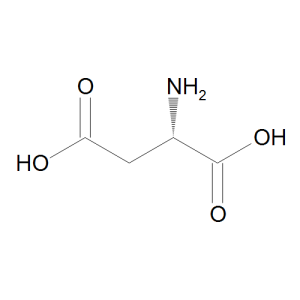
L-Aspartic Acid
$61.24 Add to cart View Product DetailsMolecular Formula : C4 H7 N O4
-
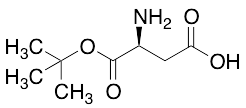
L-Aspartic Acid 1-tert-Butyl Ester
$308.78 Add to cart View Product DetailsMolecular Formula : C8H15NO4
-

L-Aspartic Acid Calcium Salt Hydrochloride
$1,155.75 Add to cart View Product DetailsMolecular Formula : C4H6CaClNO4
-

L-Aspartic Acid Dibenzyl Ester p-Toluenesulfonate Salt
$100.91 Add to cart View Product DetailsMolecular Formula : C25H27O7S
-

L-Aspartic Acid Sodium Salt Monohydrate
$69.00 Add to cart View Product DetailsMolecular Formula : C4H6NO4Na . H2O
-

L-Buthionine-(S,R)-sulfoximine
$1,883.70 Add to cart View Product DetailsMolecular Formula : C8 H18 N2 O3 S
-

L-Carnosine
$142.31 Add to cart View Product DetailsMolecular Formula : C9 H14 N4 O3
-

L-Glutathione, Oxidized
$542.47 Add to cart View Product DetailsL-Glutathione, Oxidized
-

L-Tyrosine Ethyl Ester
$254.63 Add to cart View Product DetailsL-Tyrosine Ethyl Ester
-

Levamisole Hydrochloride
$74.42 Add to cart View Product DetailsLevamisole Hydrochloride
-
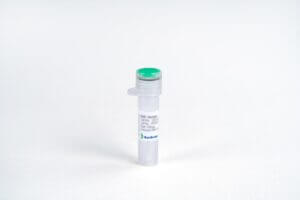
LIF, Human
$86.25 Add to cart View Product DetailsLeukemia Inhibitory Factor (LIF) is a pleiotropic cytokine belonging to the long four-helix bundle cytokine superfamily. LIF shares tertiary structure with several other cytokines, including Interleukin-6 (IL-6), Oncostatin M, ciliary neurotropic factor, and cardiotrophin-1, and their functions in vivo are also redundant to some extent. LIF can bind to the common receptor of IL-6 subfamily, gp130, and then recruit its own receptor LIF Receptor to form a ternary complex. The basal expression of LIF in vivo is low; and its expression is induced by pro-inflammatory factors, including lipopolysaccharide, IL-1, and IL-17, and inhibited by anti-inflammatory agents, including IL-4 and IL-13. The functions of LIF include proliferation of primordial germ cells, regulation in blastocyst implantation and early pregnancy, and maintenance of pluripotent embryonic stem cells.
-

LIF, Mouse
$86.25 Add to cart View Product DetailsLeukemia Inhibitory Factor (LIF) is a pleiotropic cytokine belonging to the long four-helix bundle cytokine superfamily. LIF shares tertiary structure with several other cytokines, including Interleukin-6 (IL-6), Oncostatin M, ciliary neurotropic factor, and cardiotrophin-1, and their functions in vivo are also redundant to some extent. LIF can bind to the common receptor of IL-6 subfamily, gp130, and then recruit its own receptor LIF Receptor to form a ternary complex. The basal expression of LIF in vivo is low; and its expression is induced by pro-inflammatory factors, including lipopolysaccharide, IL-1, and IL-17, and inhibited by anti-inflammatory agents, including IL-4 and IL-13. The functions of LIF include proliferation of primordial germ cells, regulation in blastocyst implantation and early pregnancy, and maintenance of pluripotent embryonic stem cells.
-

Light Green SF Yellowish
$52.69 Add to cart View Product DetailsLight Green SF Yellowish
-

Linoleic Acid
$189.04 Add to cart View Product DetailsLinoleic Acid
-

Lithium Dodecyl Sulfate
$74.73 Add to cart View Product DetailsLithium Dodecyl Sulfate
-

LIX/CXCL5 (74aa), Mouse
$63.83 Add to cart View Product DetailsMouse LIX (C-X-C motif chemokine 5) is a small cytokine belonging to the CXC chemokine family that is cleaved into the following 2 chains [GCP-2(1-78) and GCP-2(9-78)]. Mouse LIX plays a role in reducing sensitivity to sunburn pain in some subjects, and is a potential target which could be used to understand more about pain in other inflammatory conditions. It is most closely related to two highly homologous human neutrophil chemoattractants GCP-2 and ENA-78. The first 78 amino acid residues within the predicted mature mouse LIX shares approximately 61% and 55% amino acid identity with human GCP-2 and ENA-78. This chemokine stimulates the chemotaxis of neutrophils possessing angiogenic properties. It elicits these effects by interacting with the cell surface chemokine receptor CXCR2.
-

m-Aminophenyl Tosylate
$1,443.83 Add to cart View Product DetailsMolecular Formula : C13H13NO3S
-

m-Cresol Purple
$138.61 Add to cart View Product Detailsm-Cresol Purple
-

M-CSF, Human
$86.25 Add to cart View Product DetailsMacrophage-Colony Stimulating Factor (M-CSF), also known as Colony Stimulating Factor-1 (CSF-1), is a hematopoietic growth factor. It can stimulate the survival, proliferation and differentiation of mononuclear phagocytes, in addition to the spreading and motility of macrophages. In mammals, it exits three isoforms, which invariably share an N-terminal 32-aa signal peptide, a 149-residue growth factor domain, a 21-residue transmembrane region and a 37-aa cytoplasmictail. M-CSF is mainly produced by monocytes, macrophages, fibroblasts, and endothelial cells. M-CSF interaction with its receptor, c-fms, has been implicated in the growth, invasion, and metastasis of of several diseases, including breast and endometrial cancers. The biological activity of human M-CSF is maintained within the 149-aa growth factor domain, and it is only active in the disulfide-linked dimeric form, which is bonded at Cys63.
-

M-CSF, Human(CHO-expressed)
$86.25 Add to cart View Product DetailsMacrophage-Colony Stimulating Factor (M-CSF), also known as Colony Stimulating Factor-1 (CSF-1), is a hematopoietic growth factor. It can stimulate the survival, proliferation and differentiation of mononuclear phagocytes, in addition to the spreading and motility of macrophages. In mammals, it exits three isoforms, which invariably share an N-terminal 32-aa signal peptide, a 149-residue growth factor domain, a 21-residue transmembrane region and a 37-aa cytoplasmictail. M-CSF is mainly produced by monocytes, macrophages, fibroblasts, and endothelial cells. M-CSF interaction with its receptor, c-fms, has been implicated in the growth, invasion, and metastasis of of several diseases, including breast and endometrial cancers. The biological activity of human M-CSF is maintained within the 149-aa growth factor domain, and it is only active in the disulfide-linked dimeric form, which is bonded at Cys63.
-

M-CSF, Mouse
$86.25 Add to cart View Product DetailsMacrophage-Colony Stimulating Factor (M-CSF), also known as Colony Stimulating Factor-1 (CSF-1), is a hematopoietic growth factor. It can stimulate the survival, proliferation and differentiation of mononuclear phagocytes, in addition to the spreading and motility of macrophages. In mammals, it exits three isoforms, which invariably share an N-terminal 32-aa signal peptide, a 149-residue growth factor domain, a 21-residue transmembrane region and a 37-aa cytoplasmictail. M-CSF is mainly produced by monocytes, macrophages, fibroblasts, and endothelial cells. M-CSF interaction with its receptor, c-fms, has been implicated in the growth, invasion, and metastasis of of several diseases, including breast and endometrial cancers. The biological activity of human M-CSF is maintained within the 149-aa growth factor domain, and it is only active in the disulfide-linked dimeric form, which is bonded at Cys63.
-

M-CSF, Mouse
$86.25 Add to cart View Product DetailsMacrophage-Colony Stimulating Factor (M-CSF), also known as Colony Stimulating Factor-1 (CSF-1), is a hematopoietic growth factor. It can stimulate the survival, proliferation and differentiation of mononuclear phagocytes, in addition to the spreading and motility of macrophages. In mammals, it exits three isoforms, which invariably share an N-terminal 32-aa signal peptide, a 149-residue growth factor domain, a 21-residue transmembrane region and a 37-aa cytoplasmictail. M-CSF is mainly produced by monocytes, macrophages, fibroblasts, and endothelial cells. M-CSF interaction with its receptor, c-fms, has been implicated in the growth, invasion, and metastasis of of several diseases, including breast and endometrial cancers. The biological activity of human M-CSF is maintained within the 149-aa growth factor domain, and it is only active in the disulfide-linked dimeric form, which is bonded at Cys63.
-

M-CSF, Rat
$86.25 Add to cart View Product DetailsMacrophage-Colony Stimulating Factor (M-CSF), also known as Colony Stimulating Factor-1 (CSF-1), is a hematopoietic growth factor. It can stimulate the survival, proliferation and differentiation of mononuclear phagocytes, in addition to the spreading and motility of macrophages. In mammals, it exits three isoforms, which invariably share an N-terminal 32-aa signal peptide, a 149-residue growth factor domain, a 21-residue transmembrane region and a 37-aa cytoplasmictail. M-CSF is mainly produced by monocytes, macrophages, fibroblasts, and endothelial cells. M-CSF interaction with its receptor, c-fms, has been implicated in the growth, invasion, and metastasis of of several diseases, including breast and endometrial cancers. The biological activity of human M-CSF is maintained within the 149-aa growth factor domain, and it is only active in the disulfide-linked dimeric form, which is bonded at Cys63.
-

Magnesium Ascorbyl Phosphate
$1,923.75 Add to cart View Product DetailsMagnesium Ascorbyl Phosphate
-

Malachite Green Oxalate
$85.59 Add to cart View Product DetailsMalachite Green Oxalate
-

MCP‑3/CCL7, Human(CHO-expressed)
$90.56 Add to cart View Product DetailsChemokine (C-C motif) ligand 7 (CCL7) is a small cytokine that was previously called monocyte-specific chemokine 3 (MCP-3). Due to CCL7 possessing two adjacent N-terminal cysteine residues in its mature form, it is classified within the subfamily of chemokines known as CC chemokines. CCL7 specifically attracts monocytes, and regulates macrophage function. It is produced by certain tumor cell lines and by macrophages. This chemokine is located on chromosome 17 in humans, within a large cluster containing many other CC chemokines and is most closely related to CCL2. CCL7 can signal through the CCR1, CCR2 and CCR3 receptors.
-

Mecobalamin, JP
$4,502.46 Add to cart View Product DetailsMecobalamin, JP
-
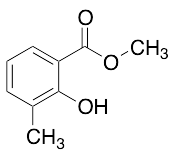
Methyl 2-Hydroxy-3-methylbenzoate
$184.58 Add to cart View Product DetailsMolecular Formula : C9H10O3
-

Methyl 4-(Bromomethyl)benzoate
$69.39 Add to cart View Product DetailsMethyl 4-(Bromomethyl)benzoate
-

Methyl Alcohol-d4, 99.8 Atom Percent D
$326.24 Add to cart View Product DetailsMethyl Alcohol-d4, 99.8 Atom Percent D
-

Methyl N,N-Dimethylanthranilate
$27.74 Add to cart View Product DetailsMethyl N,N-Dimethylanthranilate
-

Methyl-beta-cyclodextrin
$267.88 Add to cart View Product DetailsMethyl-beta-cyclodextrin
-

Methylene Chloride-d2, 99.9 Atom Percent D
$567.88 Add to cart View Product DetailsMethylene Chloride-d2, 99.9 Atom Percent D
-
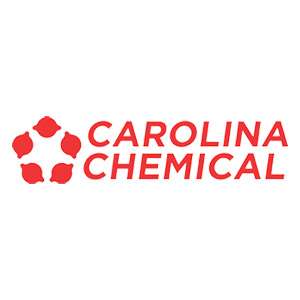
Methylhexanamine Hydrochloride, Powder – 10G
$27.60 Add to cart View Product DetailsCAS Number 13803-74-2 Molecular Formula C7H17N · HCL Molecular Weight 151.68 -

Metoclopramide Hydrochloride, Monohydrate, USP
$88.41 Add to cart View Product DetailsMetoclopramide Hydrochloride, Monohydrate, USP
-

Midazolam (CIV), USP
$7,178.39 Add to cart View Product DetailsMidazolam (CIV), USP
-

MIF, Human
$68.14 Add to cart View Product DetailsMacrophage Migration Inhibitory Factor (MIF) is a pleiotropic cytokine, existing as a homotrimer in vivo. MIF was originally identified as a T cell derived factor responsible for the inhibition of macrophage migration. However, recently MIF has received much more attention because of its possible roles in angiogenesis and cancer development. MIF is over-expressed in various cancers, including pancreatic, breast, colon, brain, prostate, skin, and lung. The intratumoral expression of MIF is strongly correlated with angiogenic growth factor expression, such as the expression of Interleukin 8 (IL-8) and Vascular Endothelial Growth Factor (VEGF), and with risk of recurrence after resection.
-

MIP-4/CCL18, Human
$155.25 Add to cart View Product DetailsCCL18, is a novel CC chemokine that is highly homologous to MIP-1α (61% amino acid sequence identity). CCL18 cDNA encodes an 89 aa residue precursor protein with a 20 aa putative signal peptide that is cleaved to generate a 69 aa residue mature protein which lacks potential glycosylation sites. In vitro, CCL18 mRNA expression is induced in alternatively activated macrophages by Th2 cytokines such as IL-4, IL-10 and IL-13, and inhibited by IFN-γ. CCL18 mRNA is also expressed by GM-CSF/IL-4-induced monocyte-derived dendritic cells. In vivo, CCL18 is highly expressed in lung and placenta but is not expressed in epidermal Langerhans cells. Recombinant CCL18 has been shown to chemoattract naive T cells, but not monocytes or neutrophils.
-

Mono-tert-Butyl Terephthalate
$1,323.94 Add to cart View Product DetailsMolecular Formula : C12 H14 O4
-
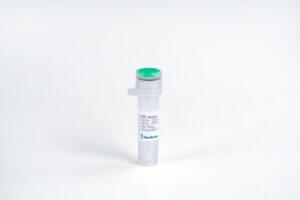
Myoglobin, His, Human
$51.75 Add to cart View Product DetailsMyoglobin, a member of the globin family of proteins, is a cytosolic oxygen-binding protein that regulates the storage and diffusion of oxygen within myocytes. The largest expression of myoglobin is in skeletal and cardiac muscle. Myoglobin exhibits various functions in relation to the muscular oxygen supply, such as oxygen storage, facilitated diffusion, and myoglobin-mediated oxidative phosphorylation. Myoglobin is the primary oxygen-carrying pigment of muscle tissues. High concentrations of myoglobin in muscle cells allow organisms to hold their breath for a longer period of time. Diving mammals such as whales and seals have muscles with a particularly high abundance of myoglobin. Myoglobin is found in Type I, Type II A and Type II B muscle; however several studies indicate myoglobinis not found in smooth muscle.
-

N-(2-Aminoethyl)acetamide
$82.80 Add to cart View Product DetailsMolecular Formula : C4 H10 N2 O
-

N-(2-Aminoethyl)glycine
$488.18 Add to cart View Product DetailsMolecular Formula : C4 H10 N2 O2
-

N-(2-Bromoethyl)phthalimide
$62.10 Add to cart View Product DetailsMolecular Formula : C10H8BrNO2
-

N-(3-Aminopropyl)-n-dodecylpropane-1,3-diamine (>80%)
$324.30 Add to cart View Product DetailsMolecular Formula : C18 H41 N3
-
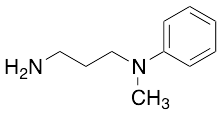
N-(3-Aminopropyl)-N-methylaniline
$176.81 Add to cart View Product DetailsMolecular Formula : C10H16N2
-

N-(4-Bromobutyl)phthalimide
$78.49 Add to cart View Product DetailsMolecular Formula : C12H12BrNO2
-
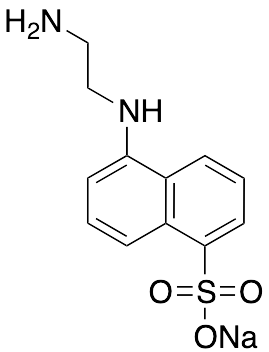
N-(Aminoethyl)-5-naphthylamine-1-sulfonic Acid Sodium Salt
$830.59 Add to cart View Product DetailsMolecular Formula : C12 H13 N2 O3 S . Na
-
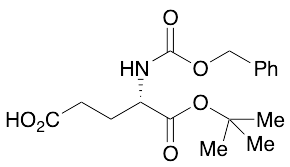
N-(Benzyloxycarbonyl)-L-glutamic Acid alpha-tert-Butyl Ester
$1,133.33 Add to cart View Product DetailsMolecular Formula : C17 H23 N O6
-
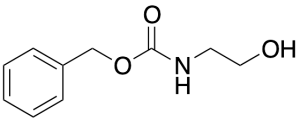
N-(Benzyloxycarbonyl)ethanolamine
$111.26 Add to cart View Product DetailsMolecular Formula : C10 H13 N O3
-

N-(Benzyloxycarbonyl)serine Benzyl Ester
$214.76 Add to cart View Product DetailsMolecular Formula : C18H19NO5






